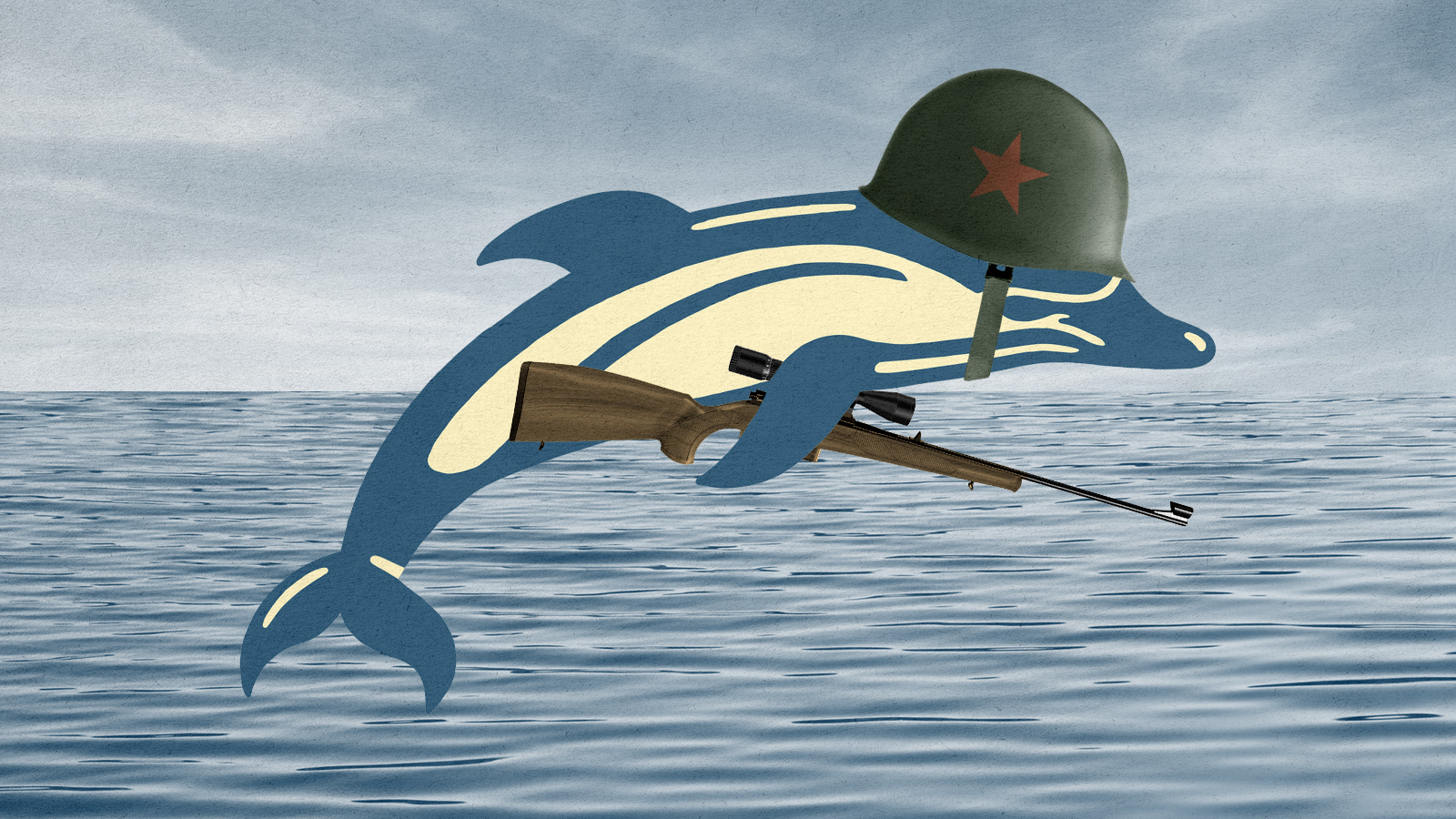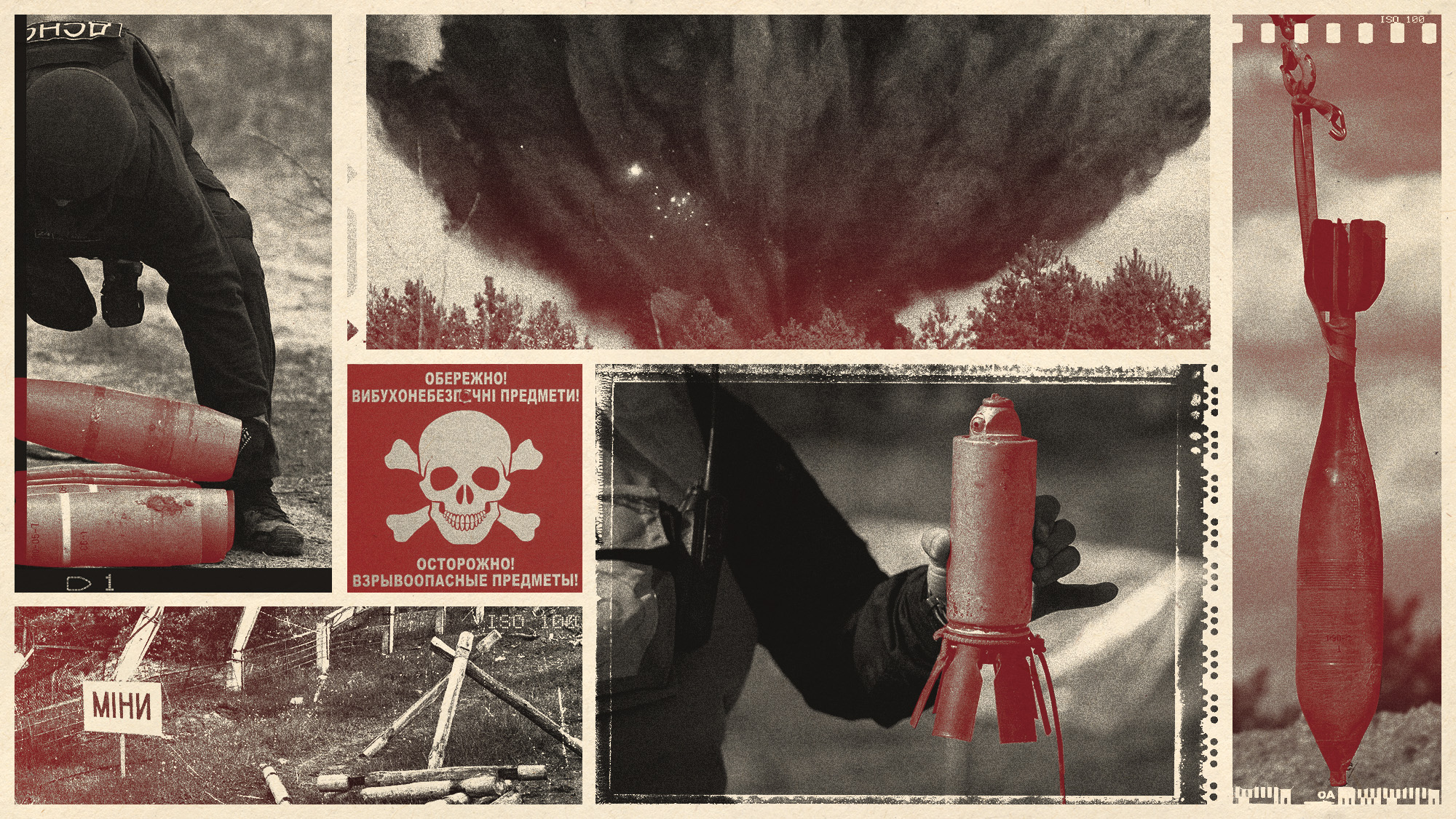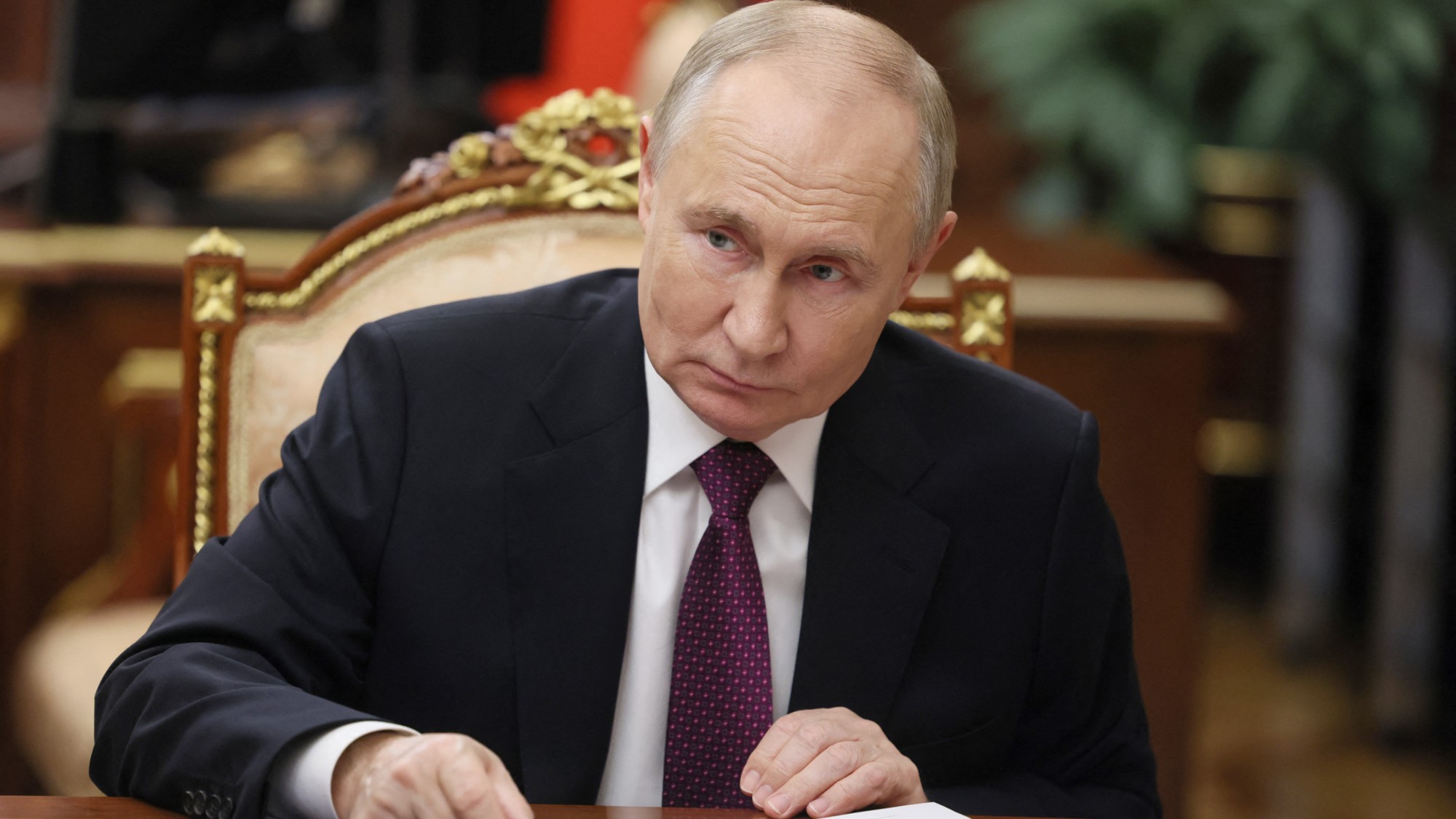Killer dolphins? How Russia's navy is using trained marine mammals in its war against Ukraine
Don't call them Flipper


Russia, wary of letting any more of its high-value Black Sea naval ships fall prey to Ukrainian missiles, is sheltering many of its vessels out of range in Sevastopol harbor in Crimea. And the entrance to the harbor is being guarded by military dolphins, according to satellite photos analyzed by The Washington Post and H.I. Sutton, a submarine analyst at the U.S. Naval Institute.
Is Russia's navy really using military dolphins as part of Moscow's Ukraine invasion, or is this story too good to check?
How are the dolphins supposed to be helping Russia's military?
The Week
Escape your echo chamber. Get the facts behind the news, plus analysis from multiple perspectives.

Sign up for The Week's Free Newsletters
From our morning news briefing to a weekly Good News Newsletter, get the best of The Week delivered directly to your inbox.
From our morning news briefing to a weekly Good News Newsletter, get the best of The Week delivered directly to your inbox.
Satellite photos from Maxar Technologies show what appear to be two dolphin pens on either side of the entrance to Sevastopol harbor, prompting Sutton to hypothesize "the dolphins may be tasked with counter-diver operations," preventing "Ukrainian special operations forces from infiltrating the harbor underwater to sabotage warships." The U.S. and Soviet Union, then later Russia, have been training dolphins for this kind of thing since the 1960s, he noted.
Is that true?
Yes. The U.S. Navy declassified its marine mammal training program, based in San Diego, in the 1990s, and Ukraine was open about the Soviet program when it inherited Crimea — and the dolphins trained near Sevastopol — after the Soviet Union's collapse.
"Dolphins are trained to search for and mark the location of undersea mines that could threaten the safety of those on board military or civilian ships," the Navy's Marine Mammal Program explains. "Both dolphins and sea lions also assist security personnel in detecting and apprehending unauthorized swimmers and divers that might attempt to harm the Navy's people, vessels, or harbor facilities."
A free daily email with the biggest news stories of the day – and the best features from TheWeek.com
Wait, there are military sea lions, too?
The sea lions, the Navy says, primarily "locate and attach recovery lines to Navy equipment on the ocean floor." When the Navy began exploring the idea of using marine mammals, it tested the sensory and physical capabilities of "more than a dozen different species of marine mammals, as well as sharks, rays, sea turtles, and marine birds," the Naval Information Warfare Center explains. But they stuck with only California sea lions and bottlenose dolphins, both of which are "known for their trainability and adaptability to a wide range of marine environments," especially deep, dark, or murky waters.
The Russians also use beluga whales and seals, Hutton says.
But the dolphins and other marine mammals aren't used for combat?
The U.S. Navy has insisted it "does not now train, nor has it ever trained, its marine mammals to harm or injure humans in any fashion or to carry weapons to destroy ships."
The Russians, on the other hand, may have been a little more aggressive with their marine conscripts. Russian state media reported in 2015 the irresistible news that Ukraine had lost three Soviet-trained "killer" dolphins to the mating impulse.
Did Russia really create killer dolphins?
Well, a former dolphin trainer-turned-conservationist named Doug Cartlidge told Britain's Independent in 1998 that when he visited the once-secret Crimean dolphin facility, the Ukrainians told him about and showed him proof that the Soviets had outfitted dolphins with lethal devices that could inject enemy divers with CO2 and trained the marine mammals to parachute out of helicopters. "If I hadn't seen the evidence myself I just wouldn't have believed it," he said.
And when Norway captured a beluga whale in 2019 with a camera-equipped harness that read "Equipment St. Petersburg," a Russian reserve colonel named Viktor Baranets scoffed at the Norwegians' claim it was a Russian spy whale. "If we were using this animal for spying do you really think we'd attach a mobile phone number with the message 'please call this number'?" Baranets, who had observed military dolphin training in the Soviet and post-Soviet eras, told Russian broadcaster Govorit Moskva. "We have military dolphins for combat roles, we don't cover that up."
"In Sevastopol we have a center for military dolphins, trained to solve various tasks, from analyzing the seabed to protecting a stretch of water, killing foreign divers, attaching mines to the hulls of foreign ships," Baranets added.
But does the U.S. really not use dolphins for combat?
The U.S. used dolphins to clear underwater mines in Iraq's Umm Qasr port during the Iraq War and protected U.S. ships and piers in the Vietnam War and the late 1980s off Bahrain, but the Navy says it doesn't weaponize its dolphin and sea lion "teammates." That hasn't stopped the rumors.
"Several decades of classification of the program's true missions led to media speculation and animal activist charges of dolphins used as offensive weapons — claims that could not be countered due to that classification," the Naval Information Warfare Center offered. A 1973 movie, The Day of the Dolphin, about trained dolphins put to deadly use, "reinforced those ideas," and despite the Navy's best efforts, "there are those few who continue to actively promote" these rumors.

Should we believe that the U.S. military really cares about the welfare of sea mammals?
No, not really. But there are less altruistic reasons to avoid making intelligent marine mammals into lethal weapons. "Since dolphins cannot discern the difference between enemy and friendly vessels, or enemy and friendly divers and swimmers," the Navy said, "it would not be wise to give that kind of decision authority to an animal."
Peter has worked as a news and culture writer and editor at The Week since the site's launch in 2008. He covers politics, world affairs, religion and cultural currents. His journalism career began as a copy editor at a financial newswire and has included editorial positions at The New York Times Magazine, Facts on File, and Oregon State University.
-
 How to make the most of chestnuts
How to make the most of chestnutsThe Week Recommends These versatile nuts have way more to offer than Nat King Cole ever let on
-
 Deaths for children under 5 have gone up for the first time this century
Deaths for children under 5 have gone up for the first time this centuryUnder the radar Poor funding is the culprit
-
 Codeword: December 22, 2025
Codeword: December 22, 2025The daily codeword puzzle from The Week
-
 The mission to demine Ukraine
The mission to demine UkraineThe Explainer An estimated quarter of the nation – an area the size of England – is contaminated with landmines and unexploded shells from the war
-
 The secret lives of Russian saboteurs
The secret lives of Russian saboteursUnder The Radar Moscow is recruiting criminal agents to sow chaos and fear among its enemies
-
 Is the 'coalition of the willing' going to work?
Is the 'coalition of the willing' going to work?Today's Big Question PM's proposal for UK/French-led peacekeeping force in Ukraine provokes 'hostility' in Moscow and 'derision' in Washington
-
 Ukraine: where do Trump's loyalties really lie?
Ukraine: where do Trump's loyalties really lie?Today's Big Question 'Extraordinary pivot' by US president – driven by personal, ideological and strategic factors – has 'upended decades of hawkish foreign policy toward Russia'
-
 What will Trump-Putin Ukraine peace deal look like?
What will Trump-Putin Ukraine peace deal look like?Today's Big Question US president 'blindsides' European and UK leaders, indicating Ukraine must concede seized territory and forget about Nato membership
-
 Ukraine's disappearing army
Ukraine's disappearing armyUnder the Radar Every day unwilling conscripts and disillusioned veterans are fleeing the front
-
 Cuba's mercenaries fighting against Ukraine
Cuba's mercenaries fighting against UkraineThe Explainer Young men lured by high salaries and Russian citizenship to enlist for a year are now trapped on front lines of war indefinitely
-
 Ukraine-Russia: are both sides readying for nuclear war?
Ukraine-Russia: are both sides readying for nuclear war?Today's Big Question Putin changes doctrine to lower threshold for atomic weapons after Ukraine strikes with Western missiles
